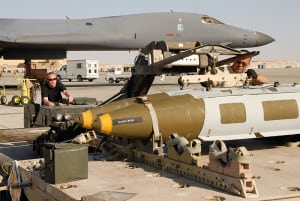
NATIONAL HARBOR, Md. – The U.S. Air Force, whose demand for precision-guided munitions (PGMs) is straining its supply, is trying to increase the production capacity of those weapons, but an uncertain budget climate is making its task difficult, service Secretary Heather Wilson said Sept. 19.With the Air Force depleting its PGM inventory to support current operations, the service is eager to boost its orders for the advanced weapons. But weapons manufacturers are reluctant to invest in more production facilities and…

 By
By 











